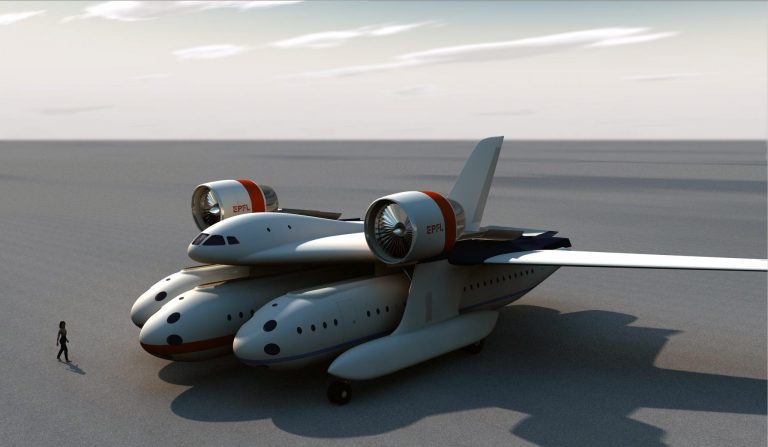Although air traffic has been increasing steadily by several percent per year, the concept of air transport has not seen any fundamental changes since the 1950s. “Airports are become ever more disconnected, waiting times are becoming longer, traffic levels are increasing, and overloads and delays are increasingly becoming the norm in air travel,” says Claudio Leonardi, in charge of the Clip-Air project.
Our needs in terms of mobility and the globalization of markets are not the only factors that are putting pressure on air transport. They are joined by energy-related constraints and environmental impacts. By the year 2020, the aviation industry has set the goal of cutting its CO2 emissions in half.

Rail transport’s flexibility in air transport
How could this conundrum be unraveled? Clip-Air proposes a revolutionary air transport concept based on a flying wing that can carry mobile and interchangeable capsules. On the one hand, the Clip-Air plane is made up of a support structure including wings, engines, fuel and a cockpit. On the other hand, there is the load to be transported: passengers and freight.
The capsule is the equivalent to a conventional airplane’s fuselage, but without motors, without a cockpit, without fuel, without landing gear, or any of the other parts that usually make up a plane. The premise behind Clip-Air is to bring rail transport’s flexibility to air transport and to make airports reach all the way into railway stations.
More than a plane: a vision of mobility
The current geometry of the plane Clip-Air, with the possibility to hook one to three capsules, is only one of the forms possible of the Clip-Air. However, the project goes beyond the reflection on a new aircraft: the concept of mobility is a catalyst for multidisciplinary research at EPFL. The plane is a starting point for the exploration of new fields of research, such as alternative energy, economic and societal impact or airport architecture of tomorrow.
